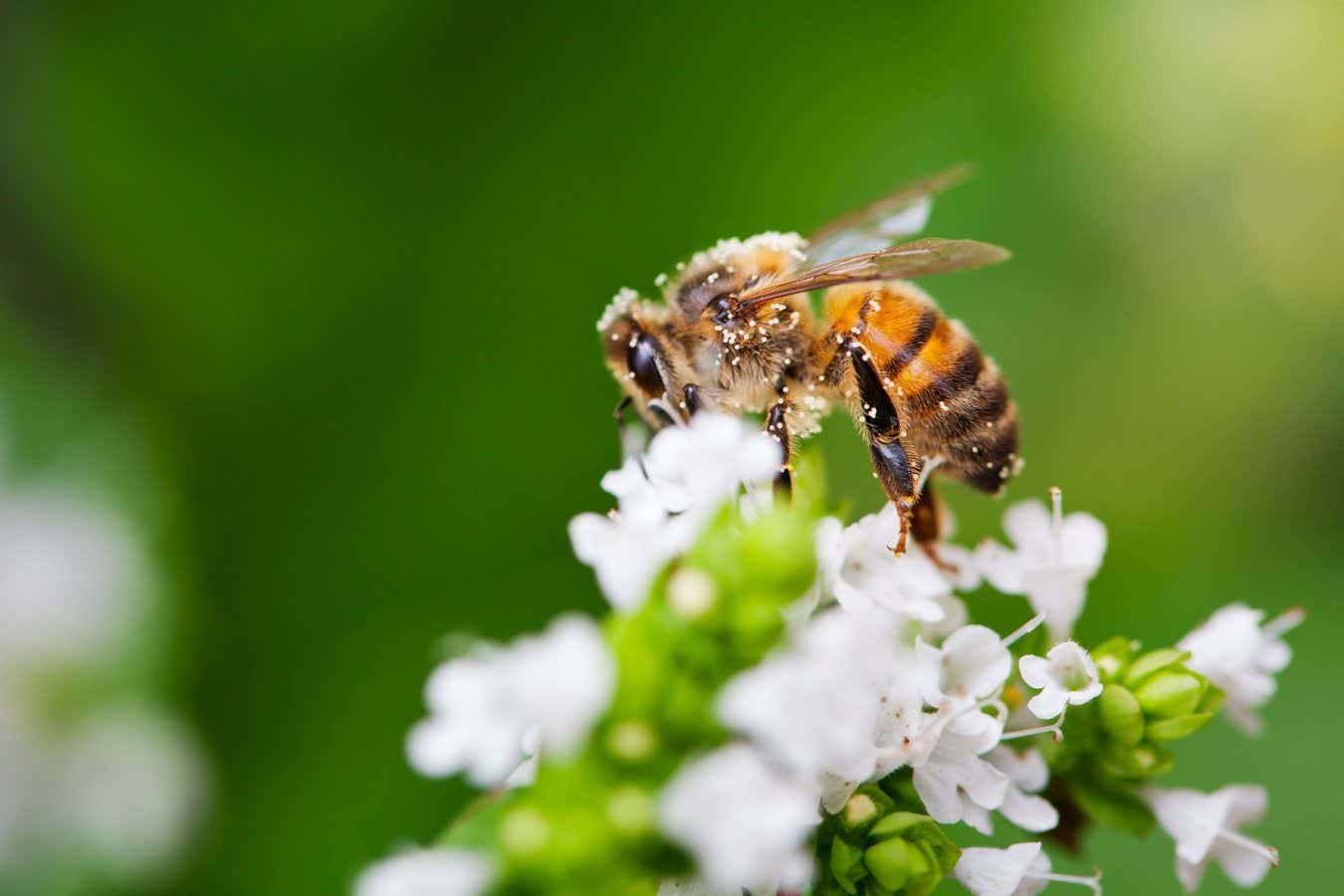
Honeybees routinely battle infectious fungi, bacteria, mites and viruses
Anthony Brown/Alamy
Two seemingly innocuous viral infections in adult honeybees may be secretly insidious, meddling with the insects’ airborne athletics. One virus makes them fly faster, while the other pumps the brakes.
Honeybees routinely battle infectious fungi, bacteria, mites and viruses – some of which can wipe out whole colonies. But not all pathogens are equally destructive. For instance, when deformed wing virus (DWV) and sacbrood virus (SBV) infect the bees early in their development, they produce lethal symptoms – malformed wings and larvae burdened with fluid-filled sacs, respectively. However, infections in adult bees are generally considered asymptomatic, even though the viruses are associated with increased deaths and reduced colony size. Michelle Flenniken at Montana State University and her colleagues wondered if the viruses weren’t so benign after all.
The team gathered insights into the bees’ health via their flight performance, infecting bees with DWV or SBV. Three days later, they attached the bees to the arm of a device shaped like a tiny tetherball set. This restricted the bees to flying in a circle. In all, 240 bees took a spin and the team measured the speed, duration and distance of their flights.
Flenniken and her colleagues found DWV-infected bees flew slower than uninfected bees. The opposite was true for SBV-infected bees. The team estimates bees with high DWV levels fly distances 49 per cent shorter than bees without the virus. Bees heavily infected with SBV get a 53 per cent range boost. “SBV infections are still detrimental to colony health overall since they kill larvae,” says Flenniken.
The findings fit into an emerging picture of the strange and subtle impacts of stealthy infections from honeybee viruses. Other pathogens are known to alter bee behaviour. For example, Kakugo virus – a unique subtype of DWV – may make honeybees more aggressive than normal, says Eugene Ryabov at the James Hutton Institute in the UK, who was not involved in the work.
“It’s surprising that DWV and SBV, which are very closely related and both members of the family Iflaviridae, have such opposite impacts on the honeybees’ flight performance,” says Ryabov.
By tampering with flight and the honeybees’ ability to travel for nectar, viruses like DWV may even hobble the insects’ pollination relationships with any nearby plants, in addition to making it more difficult for the bees to feed themselves. So, an entire ecosystem might feel under the weather when the honeybees do.
Science Advances
DOI: DOI: 10.1126/sciadv.adw8382
Topics:




